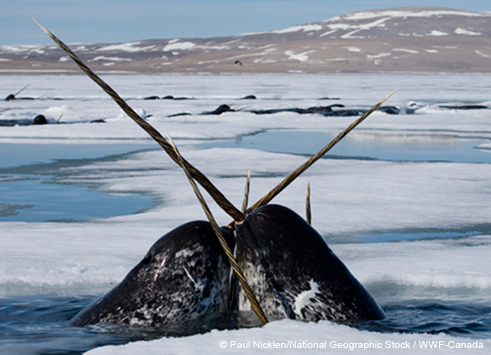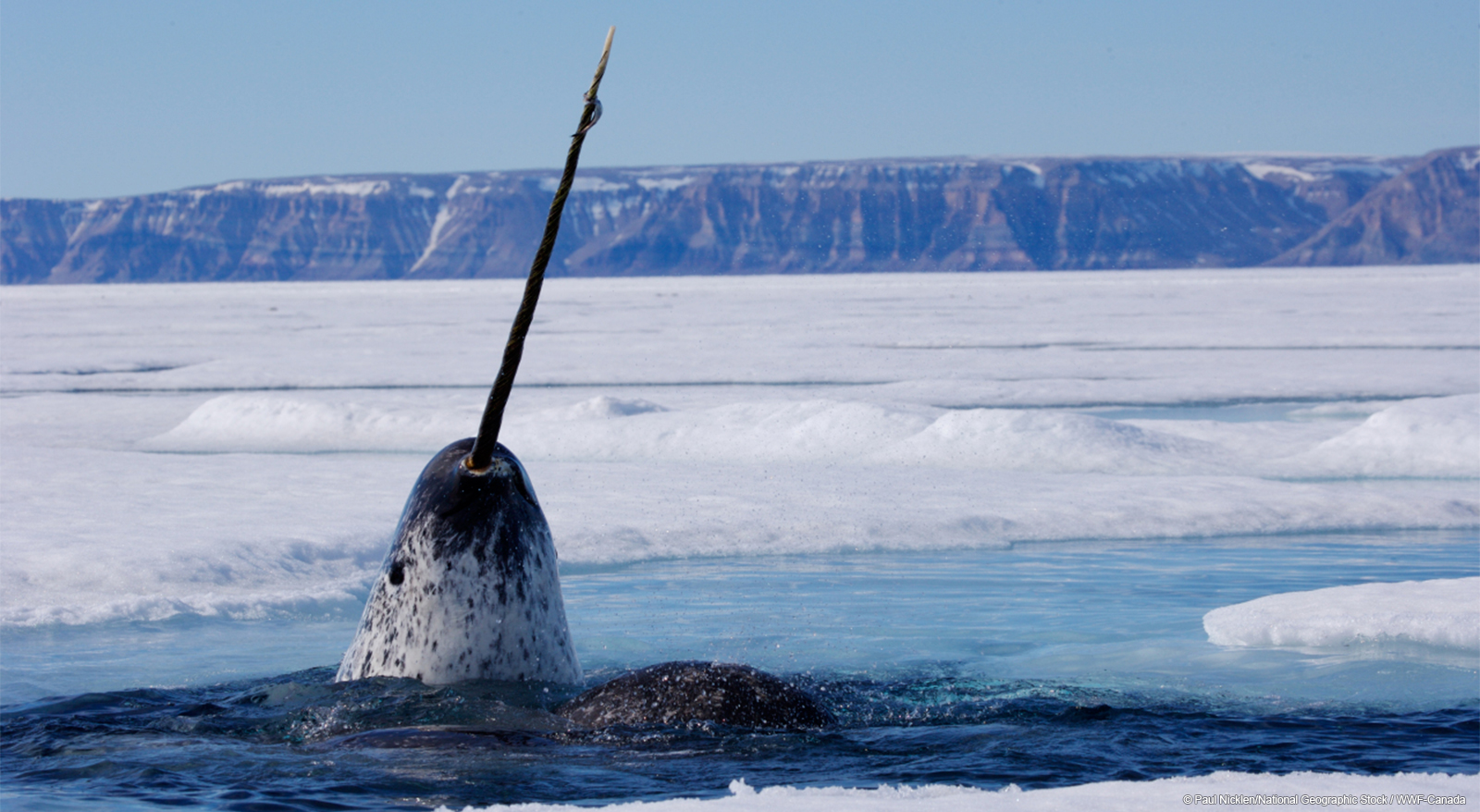Help Arctic Species This Giving Tuesday
You're currently donating: $0
Continue your donation 
Learn more about narwhal and the Arctic
Narwhal (Monodon monoceros) are one of the Arctic’s most intriguing species, and were given the nickname “unicorn of the sea” for their long ivory tusk. Narwhal travel in groups of ten to several thousand and can be found in Canada, Greenland, Norway and Russia. It is estimated that 75% of the entire species are found in Canada and over 90% of them spend their summer months here.
To scientists, Arctic species remain the most difficult to study because of their remote location and harsh habitat. Climate change affects the Arctic more than any other region. An increase in global temperatures by 2⁰C could mean a 5⁰C increase in the Arctic.
As sea ice conditions change, Arctic species like the narwhal are becoming more vulnerable.
- Melting sea ice will force species like narwhals and polar bears to change their migration patterns.
- Narwhal move easily under the sea ice, seeking out cracks in the ice to breathe. As the formation of sea ice becomes less predictable, fatal ice entrapments involving hundreds of whales at an isolated breathing hole may increase.


Narwhal Tusks
A narwhal’s tusk isn’t just an overgrown tooth. It’s a complex sensory organ, full of nerves. The tusk spirals upwards counter-clockwise and can be up to nine feet long.
Arctic species like narwhal are a uniquely Canadian responsibility.
For instance, Canadian waters are home to over 90 per cent of the world’s narwhal in summer months.
With the support of generous donors, WWF-Canada will:
- Continue to study narwhal with GPS tags through Canada’s only narwhal tagging program. The information transmitted from the tags will help us identify critical narwhal habitat, learn more about their migration patterns and understand how they are affected by shipping and industrial development.
- Study noise disturbances in Nunavut using high-frequency recording equipment to learn how noise from shipping and development impact narwhal and beluga communication. Most importantly, it will inform future marine shipping assessments.
- Develop renewable energy solutions in partnership with norther communities and other stakeholders. Together, we will demonstrate that low-impact habitat-friendly renewable energy can contribute to sustainability in the Arctic and a cleaner environment for people and wildlife.
- Work with other Arctic countries to ensure a sustainable and modern approach to conservation that includes local communities.
WWF-Canada recently launched the Arctic Species Conservation Fund to help support the most promising research to help wildlife thrive. Please join us by making a gift today and your donation will be matched* to have twice the impact.
* In support of WWF-Canada’s important conservation work, dedicated Arctic conservation supporters Patricia and Alan Koval will match all Giving Tuesday donations up to $100,000, made before 11:59 p.m. on November 29 in support of the Arctic Species Conservation Fund.
In the eventuality that net funds in excess of the program costs are raised, they will be redirected towards other important conservation programs.


